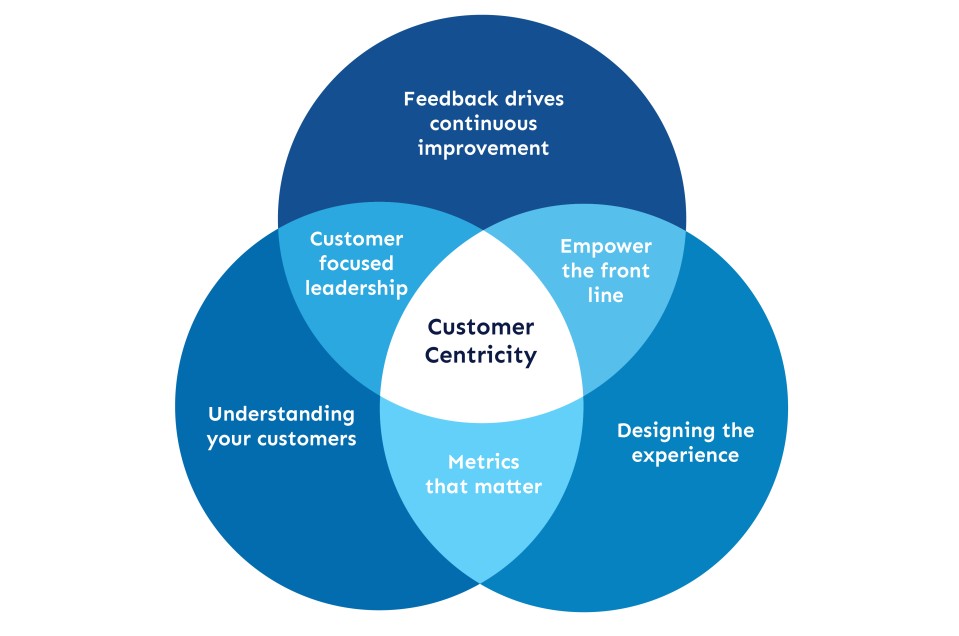Total Quality Manage...
18325 | 6 Apr 2023

Today, companies are undergoing varying degrees of transition from traditional business methods to modern business methods, changing organizations' systems, models, processes, and architectures in the process. Instead of a traditional product-centric business planning process, today's companies must align their business with consumer wants and needs. Understanding and predicting those are vital to understanding trends that leverage the digital to achieve long-term organizational sustainability.
Companies that want to integrate a "Customer-Driven" business model (CDBM) into their operations can do so by adopting process approaches focused on satisfying customers' needs and wants. The idea is to adopt a "customer-centric" process approach, which refers to the organization conducting its business as a system of processes rather than individual departments, people, products, or services. What is important is the interaction (inputs and outputs that connect the processes) between them. Due to increased competition and rapidly evolving consumer expectations, companies are under increasing pressure to find a way to attract customers and maintain profitable personal relationships. Now that companies are breaking down their data silos, they are trying to leverage information critical to unlocking customer relationships in an ever-changing marketplace.
Digital transformation is one of the most important drivers for the current development of companies. It is an evolutionary process that goes beyond new technologies and information systems and extends to the modernization of business culture, processes and models. Although digital transformation is not just about customer-centric functions, it is clear that customer experience is a key driver in many transformation projects. Digital transformation means redefining the company's entire offering and making it more competitive by analyzing and considering the market's needs and using digital technologies. You could say it's about automating the supply chain, increasing efficiency and reducing customer waiting time. But those are not the actual goals. The most successful transformed companies use their technology to improve the customer experience, for which digital transformation is the key "customer-driven" process approach.
Shifting to a "customer-centric" mindset is critical to the success of digital transformation.
Change is comprehensive, encompassing business processes, regulations, people, technology, external stakeholders and more. In this context, focusing on the customer experience becomes increasingly important in a company's digital transformation process. Creating a common and constructive internal path that leads the company to a customer-centric approach is often crucial. The IT department plays a key role in process transformation.
Still, in many cases, it is not in the context of engaging all the other functions of the business, such as operations and marketing. The risk of a fragmented or information-driven approach is to overlook the creation of a knowledge-based culture of expectations, preferences and consumer values with a culture based on technological integration without organic design. It is clear, then, that although customer experience is one of the key enablers of digital transformation, end-customer centricity often remains challenging. True transformation occurs when digital technologies change how a company does business, particularly in how it interacts with its customers and the value they create.
Digital transformation strategies support a dynamic environment where modern organizations can create a framework for developing their culture and teams with flexible and innovative technology. When executed properly, the digital transformation approach can lead to fully digital operations both within the organization and in achieving customer success, along with improved user experiences and a higher return on investment.
Digital transformations are still business transformations. They must create real value for customers and improve business outcomes for organizations. These transformations typically lead to changes in customer experience, the digitalization of products and services, the emergence of new economic models, and business advances. While digital transformation is all about technology, it is often relatively easy to obtain.
In reality, success depends on the organization, culture and other factors that holistically unite and connect the business.
Successful digital experiences can only be achieved and refined through iteration, which means that adaptive processes and technologies must integrate to support continuous measurement, adaptation and improvement of processes based on user data. Abandonment of older business practices also means abandoning old technology and processes.
What are your thoughts on the subject above? Feel free to post a comment or start a discussion.
they are trying to leverage information critical to unlocking customer relationships in an ever-changing marketplace? Regard Telkom University
Leave A Comment